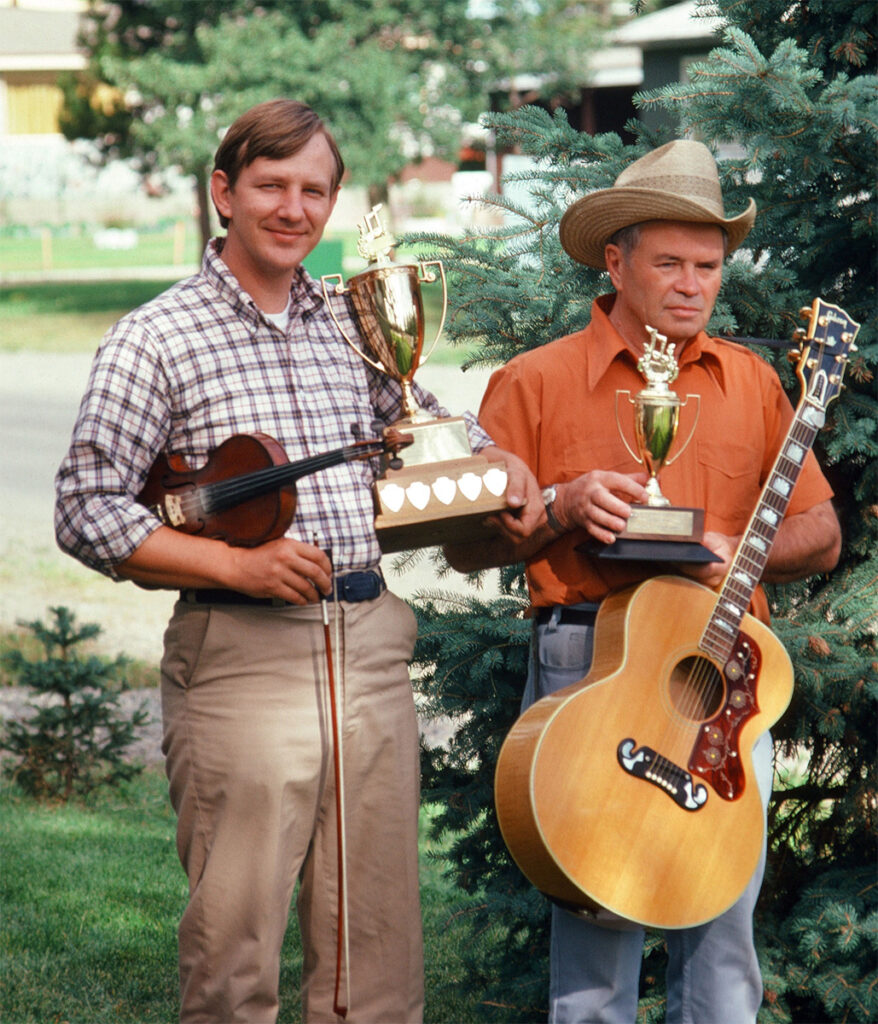
Think middle school auditoriums, parking lots full of campers, cowboy hats, long standing rivalries, a smattering of liquor, kid fiddlers too young to be that good, doting parents, and gaudy trophies. That in a nutshell describes the ambience of the fiddle contest.
Gaudy trophies rest, tantalizing, atop the stage left piano. Plastic and pearloid, they’re the very symbol of fiddling perfection. They could be bowling or hot rod trophies but for the catalog-option violins mounted atop. Clutches of cowboy hats crown double-knit, rosin-crusted fiddlers pumping out that ancient order of notes – Sally Goodin, Flop-eared Mule, Sally Johnson and Ragtime Annie. The smell of cigars, rosin, and that fragrance of pine-scented disinfectant floor cleaner so common to pea green and well waxed weekend school auditoriums rented for the occasion. Wandering the adjacent halls, you pass through centuries of social history wrapped around the fingerboards of anxious contestants. Second nature tunes are being worn into the ground in preparation for the big moment.
“Come on, Alfred, you know that’s a B-flat chord there!”
“Why don’t ‘cha play that waltz you’ve been workin’ on? It’s a sure winner.”
Nervous jigs and reels drift out from clutches of musicians, whose occasional nips from brown paper bags lubricate their nervous bows, as butterflies succumb to inebriate machismo. One by one they’re led on to the stage to face the music. An overly enthusiastic master of ceremonies sits stage right plying the audience with quips and trivia intended to both entertain and at the same time calm the nerves of the current contestant.
“Right now folks, let’s welcome to the stage, a fine young fiddler who drove all the way out here from Lakeland to get in the running. He’s a music teacher up there at the high school and we’re going to find out just how much fiddlin’ has rubbed off on him (chuckle). He’s got Daryl Worthington backin’ him up on the big old Gibson guitar (GIT-tar). You ready to go, son?”
The judges sit, most often, right down front, pencils poised over their score sheets. Twenty-five points each for “old time style,” “rhythm and timing,” “intonation,” and “danceability (toe-tapability).” No points scored for showmanship or fancy dress, points deducted for “hokum bowing,” that “Orange Blossom Special” kind of stuff.
And as they sweat out their moment in the spotlight of competition, anxiously rendering their respective trios of accomplishments – their waltzes, jigs, and reels – they are unaware that, for some, they’ve stirred forgotten feelings, and in back of the hall, aging couples waltz to the tune of almost forgotten memories.
